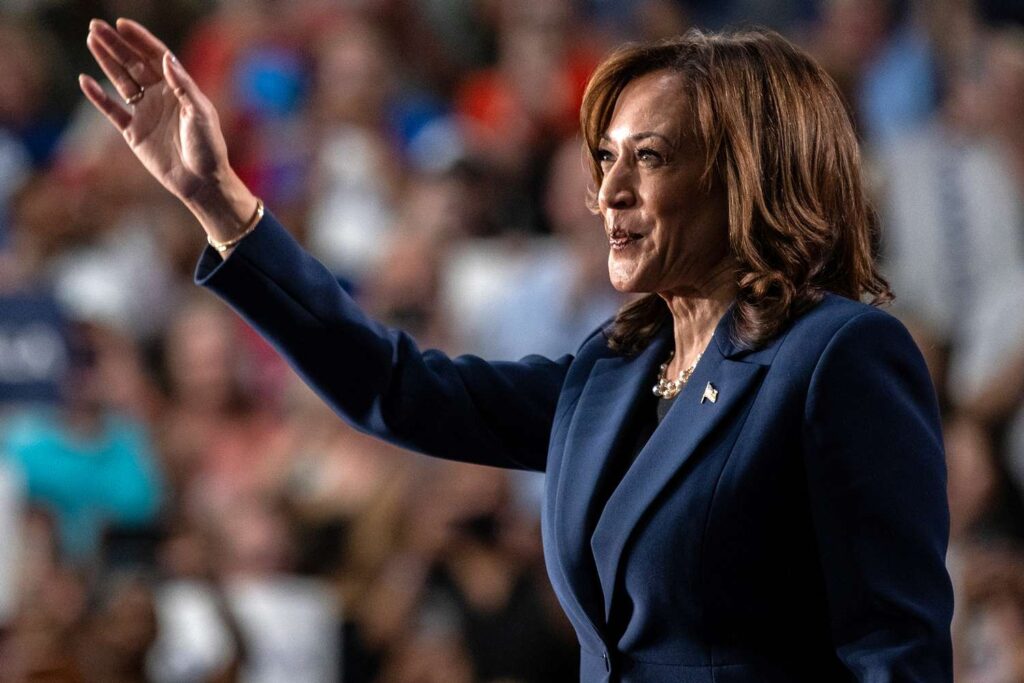NEED TO KNOW
Kamala Harris announced on Wednesday, July 30, that she will not seek higher office in 2026 after many expected her to run for California governor.
The former vice president and 2024 presidential nominee would have been the automatic front-runner in the 2026 gubernatorial race had she sought to succeed outgoing Gov. Gavin Newsom. California term limits prohibit Newsom from serving more than eight years.
“In recent months, I have given serious thought to asking the people of California for the privilege to serve as their governor,” Harris, 60, said in a statement. “I love this state, its people, and its promise. It is my home. But after deep reflection, I’ve decided that I will not run for Governor in this election.”
The nation’s first female VP stated that “our politics, our government, and our institutions have too often failed the American people, culminating in this moment of crisis,” adding that Democrats will need to embrace “fresh thinking” and not be “bound by the same playbook” moving forward.
“For now, my leadership — and public service — will not be in elected office,” she continued. “I look forward to getting back out and listening to the American people, helping elect Democrats across the nation who will fight fearlessly, and sharing more details in the months ahead about my own plans.”
Harris’ life and career began in California. Though she moved around in her childhood and attended undergrad in Washington, D.C., the Oakland native returned to Northern California for law school.
Harris and Newsom established themselves in California’s political world around the same time, with Newsom — a businessman — gravitating toward executive roles as she gravitated toward legal roles.
Mary F. Calvert/MediaNews Group/The Mercury News via Getty Images
Harris was elected district attorney of San Francisco in 2003, at the same time that Newsom was elected San Francisco mayor. When she was elected attorney general of California in 2010, Newsom was elected lieutenant governor.
Harris won a seat in the Senate in 2016, making her the second Black woman and first South Asian American U.S. senator. After ending her bid for the 2020 presidential nomination, she joined Democratic nominee Joe Biden as his running mate and together, they defeated incumbents Donald Trump and Mike Pence to win the White House.
Harris won the 2024 Democratic presidential nomination after Biden withdrew his candidacy for reelection in the final weeks of the race. She tapped Minnesota Gov. Tim Walz to join her ticket.
The pair won 48.3% of the popular vote and 226 electoral votes, losing to Trump and his vice presidential pick, JD Vance.
Emily Elconin/Bloomberg via Getty
Rumors about Harris eyeing a gubernatorial campaign began within weeks of her 2024 defeat, with insiders suggesting that she was considering either running for California governor or trying again for the White House in 2028.
Politico reported in March that she was asked about the gubernatorial bid at pre-Oscars parties and said that she planned to make her decision by the end of the summer 2025.
Harris reportedly assured supporters in private that one way or another, she was “staying in this fight.”
She remained staffed as well, keeping some of her most senior White House aides with her when she formed her new Pioneer49 organization. Chief of staff Sheila Nix and senior advisers Kirsten Allen and Ike Irby remained with Harris, while many others were said to be waiting on her call to rally the troops.
ROBYN BECK/AFP via Getty
Had Harris joined the gubernatorial race, she would likely have cleared the field, as left-leaning candidates would face pressure to step aside for the most recent figurehead of the Democratic Party.
California Lt. Gov. Eleni Kounalakis and Former California Rep. Katie Porter both previously announced their intention to run for governor, but suggested they would stand down if Harris entered the race.
Other strong Democratic candidates include former California State Controller Betty Yee, who announced back in 2019 that she planned to run for governor in 2026, and former Los Angeles Mayor Antonio Villaraigosa, who previously placed third in the 2018 gubernatorial race.
California has an open primary system, meaning the top two vote-getters during the primary contest will advance to the general election regardless of their party affiliations.

